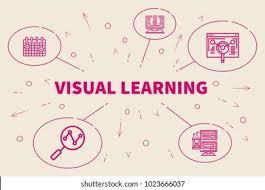The Power of Visual Learning
Visual learning is a powerful educational approach that leverages visual aids to enhance learning and retention. It recognises that individuals have different learning styles and preferences, with many benefiting greatly from visual stimuli.
Engagement and Retention
One of the key advantages of visual learning is its ability to engage learners more effectively. Visuals such as images, diagrams, charts, and videos capture attention and make complex concepts easier to understand. Research has shown that information presented visually is more likely to be remembered compared to plain text.
Enhanced Comprehension
Visual aids help learners process information more efficiently by providing context and illustrating relationships between ideas. For subjects that involve spatial reasoning or complex processes, visuals can simplify the learning experience and facilitate deeper comprehension.
Facilitating Creativity
Visual learning encourages creativity by allowing individuals to express their ideas visually. Through drawing, sketching, or designing visual representations of concepts, learners can explore their imagination and think outside the box. This hands-on approach fosters innovation and problem-solving skills.
Universal Accessibility
Visual learning transcends language barriers and can be particularly beneficial for diverse learner populations. Visuals provide a universal language that is easily understood regardless of one’s native language or background. This inclusivity makes visual learning a valuable tool for educators seeking to reach all students effectively.
Application in Education
In educational settings, visual learning strategies are commonly used to enhance teaching methods across various subjects. From infographics in science classes to mind maps in literature studies, visual aids play a crucial role in engaging students and facilitating meaningful learning experiences.
Conclusion
Visual learning offers a dynamic approach to education that caters to diverse learning styles and promotes active participation in the learning process. By harnessing the power of visuals, educators can create enriching environments that inspire curiosity, creativity, and lifelong learning.
Top FAQs About Visual Learning Strategies and Techniques
- What are the 3 strategies of visual learning?
- What is the meaning of visual learning?
- What is visual example of learning?
- How do visual learners learn best?
What are the 3 strategies of visual learning?
When exploring visual learning, three key strategies emerge as fundamental to enhancing comprehension and retention. Firstly, the use of diagrams and charts aids in simplifying complex information by visually representing relationships and structures. Secondly, incorporating visual metaphors and analogies can help learners connect abstract concepts to familiar images, facilitating deeper understanding. Lastly, interactive visual tools, such as multimedia presentations or virtual simulations, engage learners actively in the learning process, promoting experiential learning and knowledge application. By employing these strategies effectively, educators can harness the power of visual learning to create engaging and impactful educational experiences.
What is the meaning of visual learning?
Visual learning refers to an educational approach that emphasises the use of visual aids to enhance understanding and retention of information. It recognises the importance of visual stimuli such as images, diagrams, charts, and videos in helping individuals grasp complex concepts more effectively. By engaging learners through visual representations, visual learning facilitates a deeper comprehension of subjects and promotes creativity and critical thinking skills. This method acknowledges that people have different learning styles and preferences, with many benefiting significantly from the visual presentation of information.
What is visual example of learning?
A visual example of learning refers to the use of visual aids such as images, diagrams, charts, videos, and other graphical representations to facilitate the learning process. By incorporating visual elements into educational materials and presentations, learners can better understand complex concepts, retain information more effectively, and engage with the subject matter on a deeper level. Visual examples of learning not only enhance comprehension but also stimulate creativity, encourage critical thinking, and cater to diverse learning styles by providing a more interactive and dynamic learning experience.
How do visual learners learn best?
Visual learners excel in educational environments that incorporate visual aids such as diagrams, charts, images, and videos. They learn best when information is presented in a visual format that allows them to see and interact with concepts. Visual learners benefit from colour-coded materials, visual storytelling, and hands-on activities that engage their sense of sight. By leveraging visual stimuli to represent ideas and relationships between concepts, visual learners can enhance their understanding, retention, and overall learning experience.
